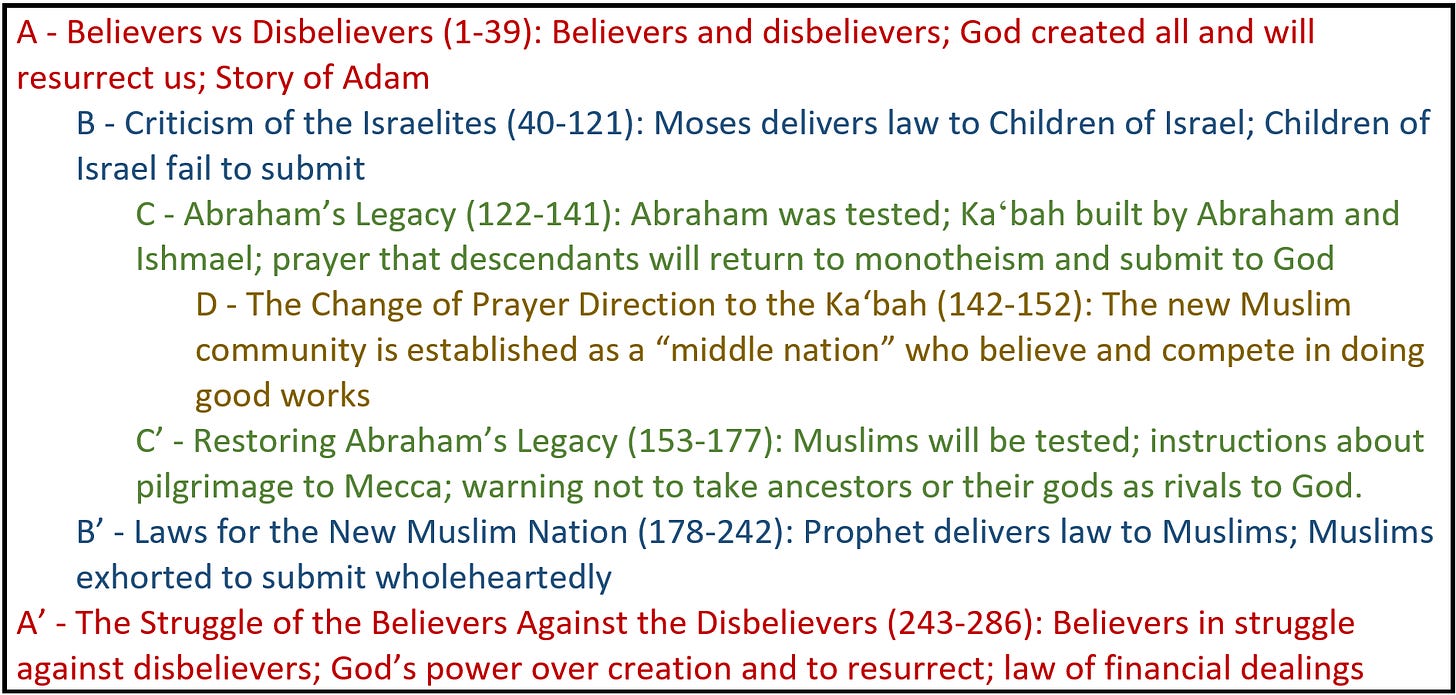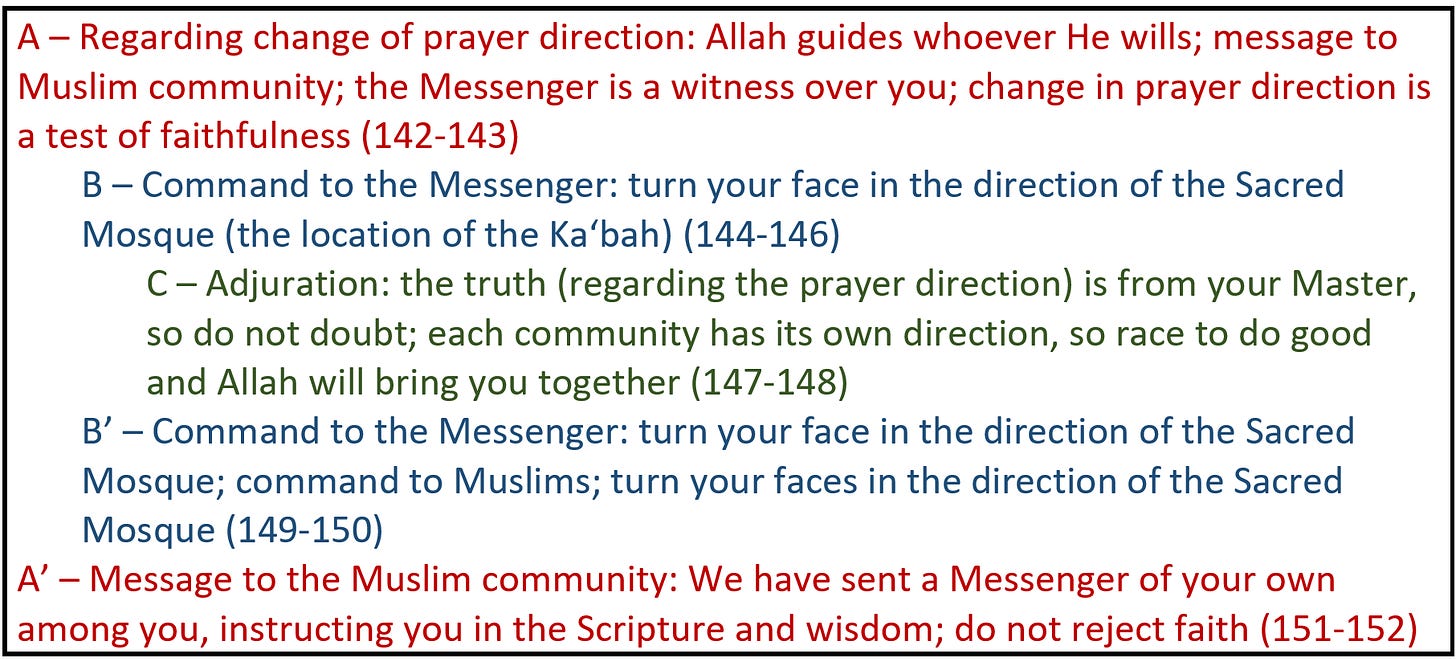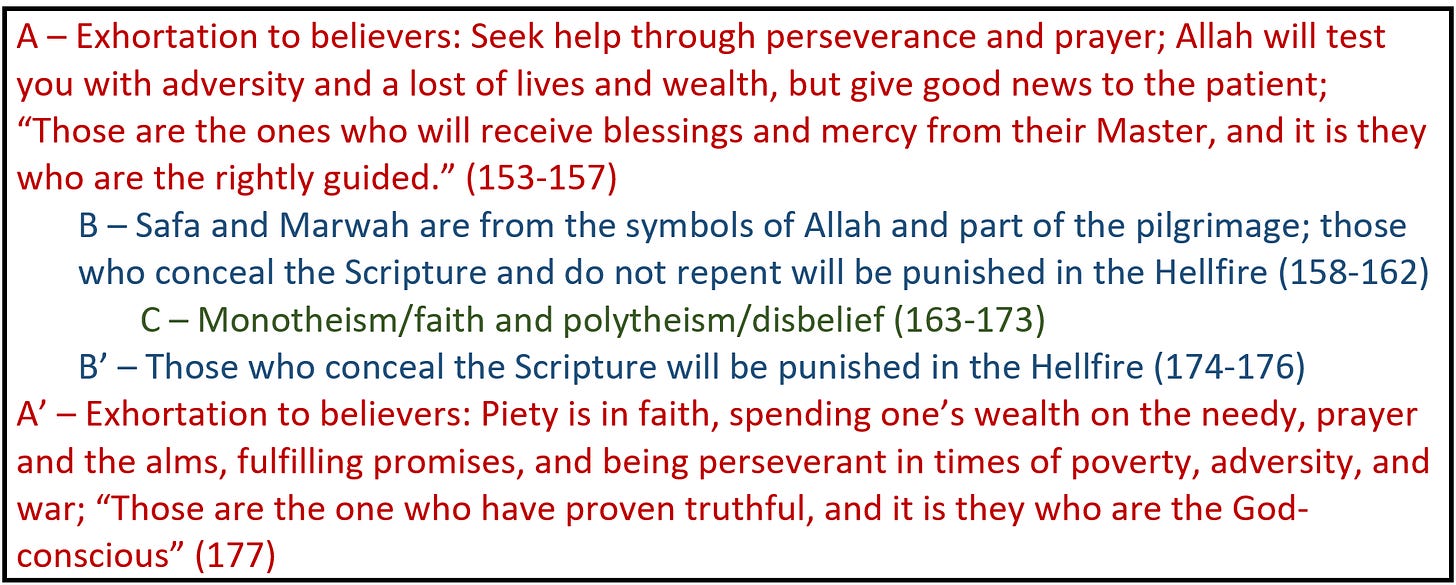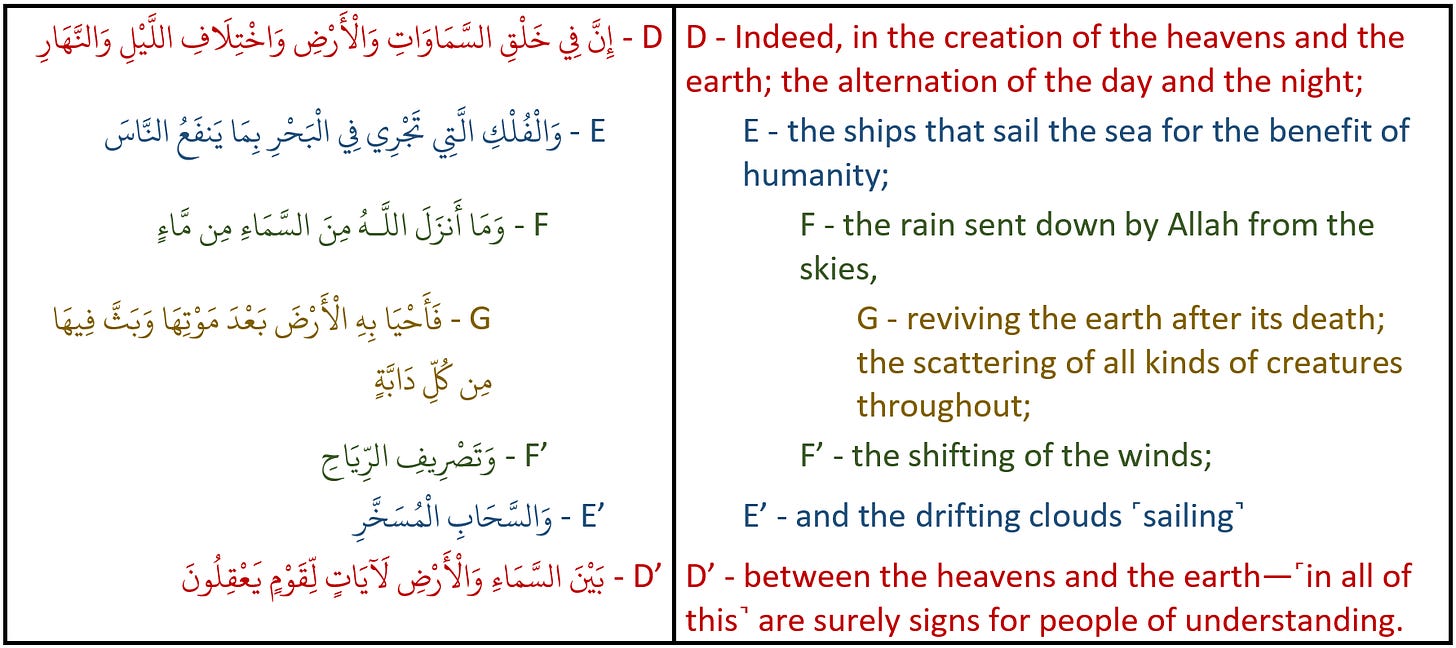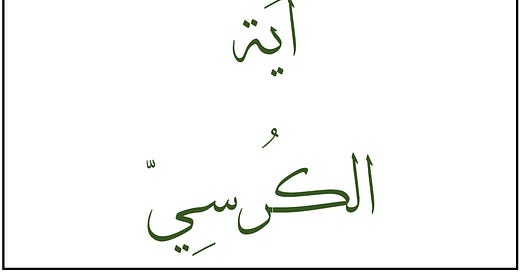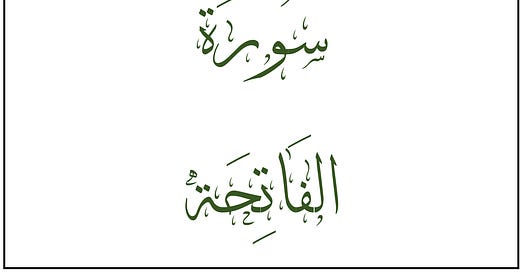

Discover more from Heavenly Order
Last week we observed the structure and coherence of Section [C] - Abraham’s Legacy. This week we will continue our breakdown of Sūrah al-Baqarah with the central section, Section [D] - The Change of Prayer Direction to the Ka‘bah, and proceed to the next section as well, Section [C’] - Restoring Abraham’s Legacy.
As a reminder, the entire sūrah is structured as so:
Section [D] - The Change of Prayer Direction to the Ka'bah
In keeping with the emphasis on Abraham’s legacy, the Quran proclaims that the direction of prayer has shifted from the former site of the Holy Temple of Jerusalem to the Ka‘bah in Mecca. The believers are now clearly established as a new religious community distinct from the People of the Scripture, the Jews and Christians, and as one that faithfully represents the balanced way of Abraham and his family: “Thus We have made you a middle nation” (143).
Just as Abraham was made “a leader for mankind,” the new community is supposed to “bear witness for mankind”—that is, carry the divine message through word and example. The Messenger ﷺ, in turn, functions as a witness over the community (143), reciting to them Allah’s āyāt, purifying them, and teaching them the Scripture and wisdom (151), thus fulfilling Abraham’s prayer after building the Ka‘bah in the previous section (129).
The audience is also informed that the change of prayer direction is only a test to distinguish those who are sincere in their religious commitment from those who are merely clinging to tradition. What really matters is not the direction of prayer per se, but sincere submission to Allah’s command.
Finally, in the words that echo Allah’s earlier address to the Children of Israel (āyāt 40, 47, 122), the new community is told, “It is so that I may complete My favor upon you” (50) and are instructed, “Remember Me and I will remember you. Be grateful to Me and do not disbelieve in Me” (152).
In summary, this section has the following ring structure:
Section [C’] - Restoring Abraham’s Legacy
Although Allah ﷻ has just honored the new Muslim community, He now addresses them with a serious message. Restoring Abraham’s legacy is no easy task, for just like their father Abraham, they are about to be heavily tested. The section has the following ring structure:
It should also be noted that the center, [C], is internally structured as a parallelism:
And within [C1], āyah 164 appears to be in its own ring structure:
والله أعلم - And Allah knows best
Sources
The ring structure of this section, as well as the parallel structure of [C] was reproduced from Farrin, “Surat al-Baqara,” 26, with modifications.
Ali Khan, Nouman and Sharif Randhawa. Divine Speech: Exploring the Quran as Literature. Bayyinah Institute, 2016
Amīn Aḥsan Iṣlāḥī, Tadabbur-e-Qur’ān: Pondering Over the Qur’ān Volume 1: Tafsīr of Sūrah al-Fātiḥah and Sūrah al-Baqarah, trans. Mohammad Saleem Kayani (Kual Lampur: Islamic Book Trust, 2006), 526-527
Mustansir Mir, “The Sūra as a Unity: A Twentieth Century Development in Qur’an Exegesis” in Approaches to the Qur’an, eds. G. R. Hawting and Abdul-Kader A. Shareef, eds. (London: Routledge, 1993), 211-224
Robinson, Discovering the Qur’an, 201-223
A. H. Mathias Zahniser, “Major Transitions and Thematic Borders in Two Long Sūras: al-Baqara and al-Nisā’” in Literary Structures of Religious Meaning in the Qur’an, ed. Issa J. Boulatta (RichmondL Curzon, 2000)
Raymond Farrin, “Surat al-Baqara: A Structural Analysis,” Muslim World 100.1 (2010): 17-32
Nevin Reda El-Tehry, Textual Integrity and Coherence in the Qur’an: Repetition and Narrative Structure in Surat al-Baqara (PhD diss., University of Toronto, Toronto, 2010)
Farrin, Structure and Qur’anic Interpretation, 9-24
Subscribe to Heavenly Order
Exploring the Divine Structure and Coherence of the Quran. Join us as we dismantle the myth of the "disjointed" and "random" organization of Islam's Revealed Text.





